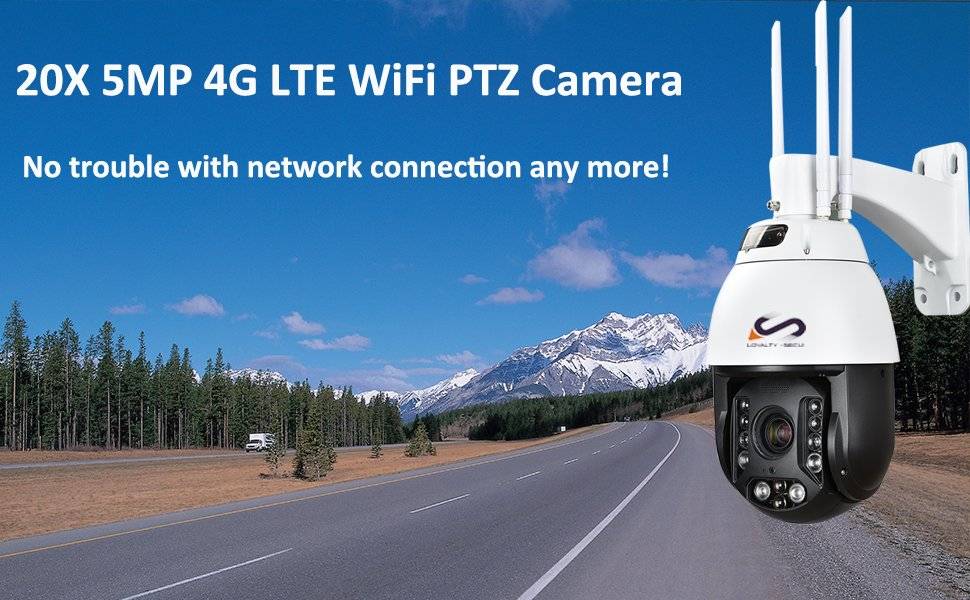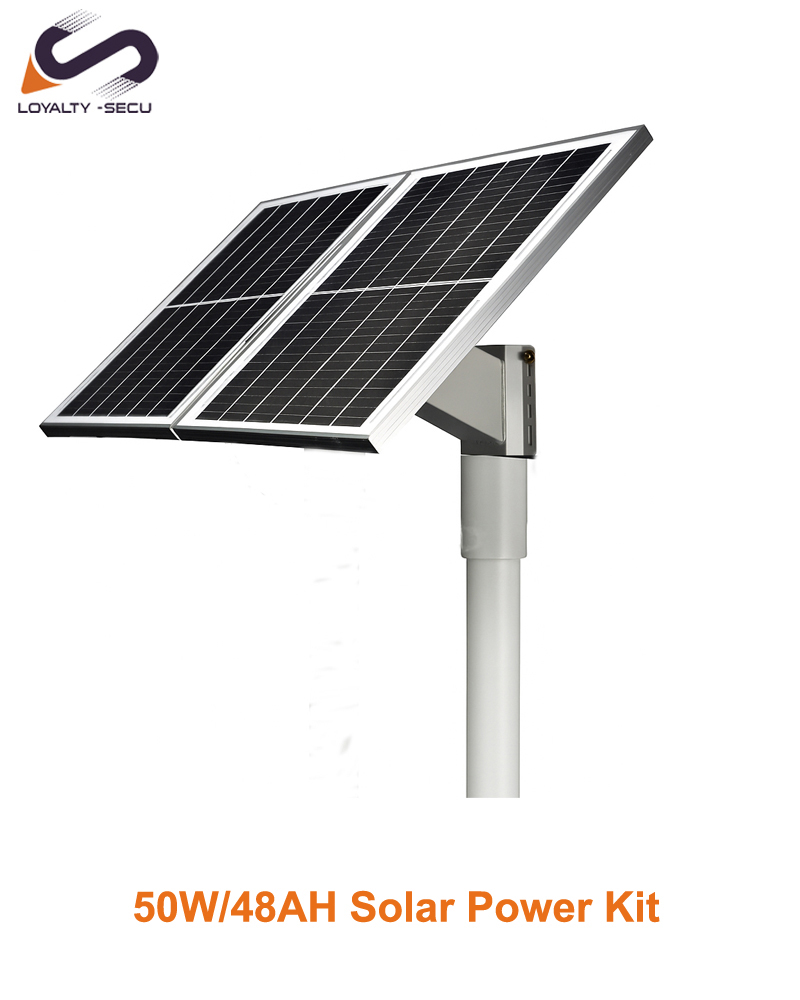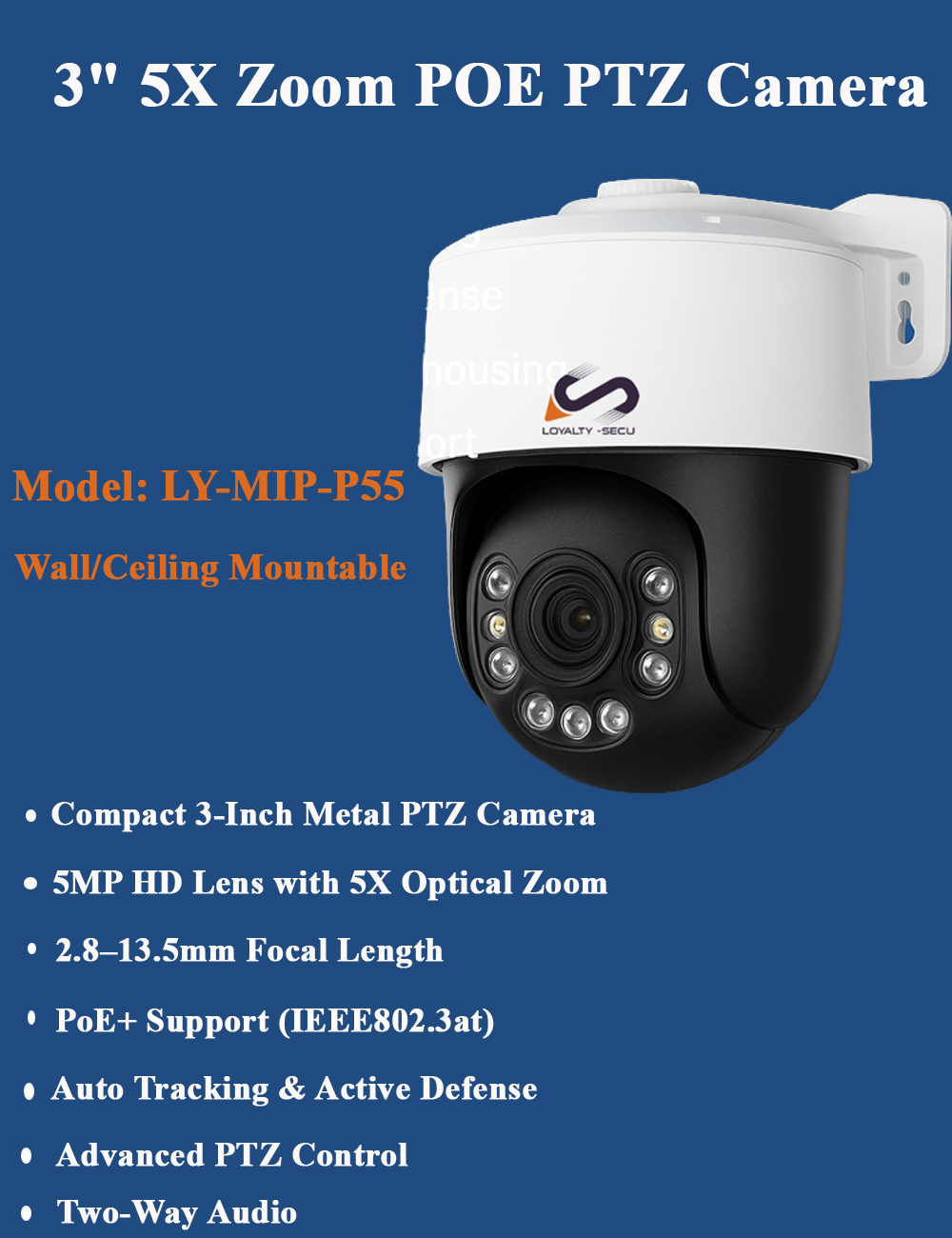
Are you finding it tough to keep an eye on every corner of your farm? Worried about missing crop issues or livestock problems? 4G PTZ cameras give you eyes everywhere, anytime.
You can use 4G PTZ cameras for farm monitoring by placing them in key areas. They connect using the 4G mobile network, so you don’t need Wi-Fi. This lets you watch live video, control the camera’s view remotely (pan, tilt, zoom), and protect your farm from anywhere.
Now, you might wonder how these cameras really change things on a farm day-to-day. It’s more than just watching; it’s about making smarter decisions and reacting faster. Let’s look into the specific ways these cameras can be a game-changer for different parts of your agricultural work.
What are the main benefits of using 4G PTZ cameras in farming?
The big advantages are clear: you can monitor your farm remotely using the 4G network, the pan-tilt-zoom covers large areas easily, security improves against theft or damage, and you get quick alerts for important events like someone entering or equipment issues.
Let’s break down these benefits further. When I first thought about setting up cameras, I mainly considered security. But I quickly realized the operational benefits were just as significant. It wasn’t just about catching trespassers; it was about efficiency and information.
Enhanced Security
The most obvious benefit is better security. Farms often cover large areas, making them hard to secure completely. Gates can be left open, fences might get damaged, and valuable equipment or livestock are often targets. A 4G PTZ camera acts as a constant watchdog. I remember having issues with people occasionally dumping trash near a back entrance. Placing a camera there, even just a visible one, stopped it almost immediately. The ability to pan around and zoom in means one camera can cover a much larger area than a fixed one. Plus, many models have motion detection and night vision, alerting you instantly if something happens after dark.
Improved Operations
Beyond security, these cameras help manage daily operations. You can check if automated feeders are working, monitor water levels in troughs, or see if gates were closed properly – all from your phone or computer. This saves a lot of time driving or walking around just for routine checks. For me, being able to quickly check on the irrigation system in a far field without driving out there has saved countless hours, especially during busy seasons. It helps spot problems like leaks or blockages much faster.
Remote Accessibility
The “4G” part is key here. Many farms don’t have reliable Wi-Fi coverage across their entire property. 4G cameras use cellular data, just like your phone, so you can place them almost anywhere you get a mobile signal. This flexibility is huge. The PTZ (Pan-Tilt-Zoom) functions mean you’re not limited to a static view. You can follow moving objects, inspect specific details, or get a wide overview as needed. This remote control and accessibility provide incredible flexibility.
| Benefit | How it Helps | Compared to Traditional Methods |
|---|---|---|
| Remote Viewing | Check farm status from anywhere via phone/PC. | Requires physical presence on site. |
| PTZ Control | Cover large areas, zoom in on details. | Needs multiple fixed cameras or patrols. |
| 4G Connectivity | Works in areas without Wi-Fi. | Limited by Wi-Fi range or cabling. |
| Motion Alerts | Get instant notifications of activity. | Issues discovered later, if at all. |
| Night Vision | Monitor effectively 24/7, even in darkness. | Limited visibility after sunset. |
Where are the best places to install these cameras on a farm?
Think about farm entrances and exits, areas where you keep livestock, storage sheds for valuable equipment or feed, water sources, and overlooking large fields or orchards to get the best surveillance coverage.
Choosing the right spots is crucial. Putting a camera in the wrong place is almost as bad as not having one. I learned this early on when I initially placed a camera overlooking a field, but it couldn’t quite see the gate access point properly. Moving it just slightly made a huge difference. Think about what you most need to see.
Monitoring Access Points
Farm entrances, gates, and main driveways are top priorities. These are the most common entry points for vehicles and people, whether expected visitors or unwanted trespassers. Placing a PTZ camera here allows you to see who is coming and going. You can zoom in on license plates or faces if needed. Covering secondary access points or paths, even less frequently used ones, is also smart for comprehensive security.
Protecting Assets
Where do you store your most valuable things? Tractors, tools, fuel tanks, harvested crops, feed supplies? These areas are prime targets for theft. Installing cameras overlooking equipment sheds, fuel storage, and barns provides surveillance over these assets. Similarly, livestock pens, calving sheds, or high-value animal enclosures benefit greatly from camera monitoring, both for security against theft and for observing animal well-being.
Overseeing Operations
Consider areas critical to your daily work. This could be overlooking main crop fields to monitor growth or irrigation, watching water troughs to ensure livestock have water, or monitoring automated systems like feeders or milking parlors. A PTZ camera gives you the flexibility to check on different aspects within its view. For instance, one camera mounted high might oversee a large pasture, allowing you to pan across to find animals or zoom in on a specific area if you notice something unusual.
| Location Type | Primary Monitoring Goal | Why PTZ is Useful |
|---|---|---|
| Entrances/Gates | Security, Access Control | Track vehicles/people, zoom on details. |
| Equipment Sheds | Asset Protection (Theft) | Wide view of storage, motion alerts. |
| Fuel Tanks | Asset Protection (Theft) | Monitor access, detect unauthorized use. |
| Livestock Pens | Animal Security & Well-being | Observe behavior, health, feeding, birthing. |
| Main Fields | Crop/Irrigation Monitoring | Scan large areas, zoom on potential issues. |
| Water Sources | Livestock/Irrigation Check | Confirm water availability/system function. |
How do these cameras help with crop monitoring specifically?
Are you tired of walking what feels like endless miles just to check your crops? Do you worry about missing the early signs of disease or pests that could ruin a harvest? These cameras let you inspect your fields remotely.
4G PTZ cameras aid crop monitoring by letting you visually check growth stages, spot diseases or pests early, monitor irrigation systems for problems, and confirm if treatments are working, all without having to be physically present all the time.
Walking the fields is still essential sometimes, but cameras add another layer of observation that’s incredibly efficient. I remember spotting an irrigation leak in a corner of a field via the camera feed one morning. Catching it early saved water and prevented potential yield loss in that area, and I didn’t have to walk half a mile first thing to find it. The ability to zoom is particularly powerful for crops.
Early Problem Detection
The biggest advantage is spotting problems sooner. Diseases, pests, nutrient deficiencies often show subtle visual signs early on. With a PTZ camera, you can regularly scan fields and zoom in on any areas that look suspicious. Is there yellowing? Are there signs of insect damage on leaves? Catching these issues when they first appear, perhaps affecting only a small area, allows for quicker, more targeted intervention before they spread across the entire field. This can save significant money on treatments and prevent major yield losses.
Growth Tracking
Monitoring crop development stages is crucial for timing tasks like fertilization, pest control, and harvest. A camera allows you to visually track growth progress across different parts of a field remotely. You can compare growth rates, check for uniformity, and make better decisions about management practices. Some advanced setups even allow for creating time-lapse videos, showing growth over days or weeks, which can be very insightful.
Irrigation and Condition Management
Is your irrigation system working correctly everywhere? Are certain areas waterlogged or too dry? A camera can help you visually inspect sprinklers, drip lines, or surface water distribution. You can zoom in to check for blockages, leaks, or uneven coverage. Beyond irrigation, you can monitor for effects of weather events like hail damage, wind damage, or lodging (crops falling over) without having to immediately traverse the entire affected area.
| Camera Feature | Crop Monitoring Task | Benefit |
|---|---|---|
| Pan/Tilt | Scan large fields/multiple sections. | Efficient coverage without moving camera. |
| Zoom | Inspect leaf condition, spot pests/disease. | Early detection of small issues. |
| Remote Access | Check fields anytime, from anywhere. | Saves time, allows frequent monitoring. |
| Recording | Review footage, track changes over time. | Compare growth, document issues. |
| Night Vision | Monitor irrigation cycles overnight. | Check system operation outside daylight hours. |
How can 4G PTZ cameras improve livestock management?
Do you lose sleep worrying about your animals’ safety, especially at night? Is it challenging to keep track of births or spot health problems quickly in a large herd? Remote cameras can act as a constant, watchful eye over your livestock.
These cameras boost livestock management by letting you watch animal behavior remotely, monitor their health, track feeding patterns, oversee birthing, and increase security against theft or predators, particularly useful in big pastures or remote areas.
For anyone raising animals, knowing they are safe and healthy is paramount. Before I had cameras covering the main pasture and the calving shed, nights during birthing season were stressful, involving multiple trips out in the cold and dark. Now, I can check on expecting mothers or the whole herd right from my kitchen table using my phone. It’s been a huge relief and a practical help.
Animal Welfare Checks
Regularly observing your animals is key to good management. Cameras allow you to do this without disturbing them. You can check if animals are exhibiting normal behaviors, if any seem isolated or lethargic (potential signs of illness), or if there are injuries. During extreme weather, you can quickly verify if livestock have access to shelter and water. The PTZ function lets you scan across a herd or flock and then zoom in on individual animals if something catches your eye.
Security and Loss Prevention
Livestock theft is a serious concern for many farmers. Cameras positioned near pens, pastures, and access points act as a deterrent and provide evidence if theft occurs. Monitoring also helps protect animals from predators. Motion alerts can notify you if there’s unusual activity near your animals, especially at night when predators are often more active. Early warnings can give you a chance to intervene.
Behavior Analysis and Management
Watching how animals interact with each other, their environment, and feeding systems can provide valuable insights. Are they using the feeders correctly? Is there overcrowding or competition at water troughs? Are certain animals being bullied? Observing calving or lambing remotely allows you to monitor progress and see if intervention is needed without stressing the mother with your presence. For instance, I was able to spot a ewe having difficulty lambing via the camera and get out there to assist promptly.
| Monitoring Aspect | How 4G PTZ Cameras Help | Specific Benefit |
|---|---|---|
| Health Monitoring | Observe behavior for signs of illness/injury. | Early detection and treatment. |
| Security (Theft) | Deter thieves, record incidents. | Reduced losses, potential evidence. |
| Security (Predators) | Monitor pastures, get motion alerts. | Protect vulnerable animals (young), early warning. |
| Birthing Season | Observe labor remotely, check newborns. | Timely assistance if needed, reduced stress on mother. |
| Feeding/Watering | Check trough levels, feeder function. | Ensure access to resources, spot system issues. |
| General Behavior | Understand herd dynamics, identify stress. | Improve management practices, ensure well-being. |
What technical challenges might I face when setting up these cameras?
Are you worried about the technical side of using 4G cameras on the farm? Concerned about getting a good signal or keeping the cameras powered up way out in the fields? Knowing the potential hurdles helps you plan for a smoother setup.
Common technical challenges include finding reliable 4G signal strength in rural locations, supplying continuous power (solar panels are a popular solution), protecting the cameras from harsh weather conditions, and managing mobile data usage and associated costs effectively.
Setting up these cameras isn’t always plug-and-play, especially on a farm. I definitely hit a few snags initially. Finding the best spot for signal strength took some trial and error, and figuring out the right solar panel and battery size for year-round power required some research. But overcoming these challenges is definitely achievable.
Ensuring Connectivity
The “4G” aspect relies entirely on mobile network coverage. Before buying a camera, check the signal strength from your preferred mobile carrier (e.g., Verizon, AT&T, T-Mobile) at the exact locations you plan to install cameras. Use your phone or a signal meter. Sometimes, signal might be weak near the ground but stronger higher up, so mounting the camera on a pole can help. In areas with very poor signal, you might need an external antenna for the camera or explore options like signal boosters, though these add complexity and cost. Data usage is another factor; streaming high-definition video uses data, so choose a suitable data plan.
Reliable Power Solutions
Cameras need power 24/7. Running power cables across large farm areas is often impractical or impossible. Solar power is usually the most viable solution. This involves a solar panel, a rechargeable battery, and a charge controller. You need to calculate the camera’s power consumption (check the specs!) and size the panel and battery appropriately to ensure enough power, even during cloudy days or long winter nights. Getting this right is key to avoiding frustrating camera downtime. Some cameras come bundled with solar kits designed for their power needs.
Weather and Durability Concerns
Farm environments can be harsh. Cameras need to withstand rain, wind, dust, extreme temperatures (hot summers, freezing winters), and potentially impacts from farm equipment or animals. Look for cameras with a high IP (Ingress Protection) rating, like IP66 or IP67, which indicates they are well-protected against dust and water. Choosing sturdy mounting hardware is also important to keep the camera secure in strong winds. Regular cleaning of the lens might be needed, especially in dusty conditions.
| Challenge | Key Consideration | Potential Solution(s) |
|---|---|---|
| 4G Signal | Carrier coverage at install spot. | Check signal map/meter, mount high, external antenna, booster. |
| Power Supply | Continuous power requirement. | Solar panel + battery system (sized correctly), mains power if near building. |
| Weather | Rain, dust, temperature extremes. | High IP rating (IP66+), sturdy mounting, protective housing if needed. |
| Data Usage | Cost of mobile data plan. | Choose appropriate plan, configure lower resolution/frame rate if needed. |
| Maintenance | Lens cleaning, physical damage. | Regular checks, strategic placement away from high-traffic paths. |
Conclusion
In short, 4G PTZ cameras are incredibly useful tools. They bring remote visibility, better security, and operational efficiency to modern farming, helping you manage crops and livestock more effectively.



